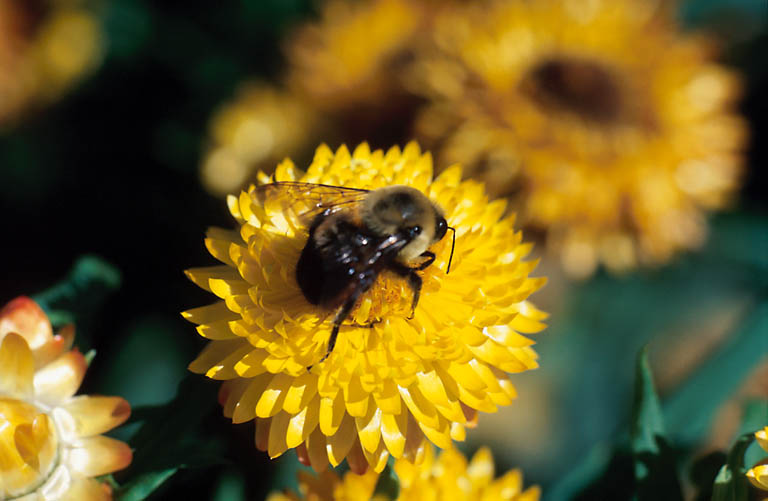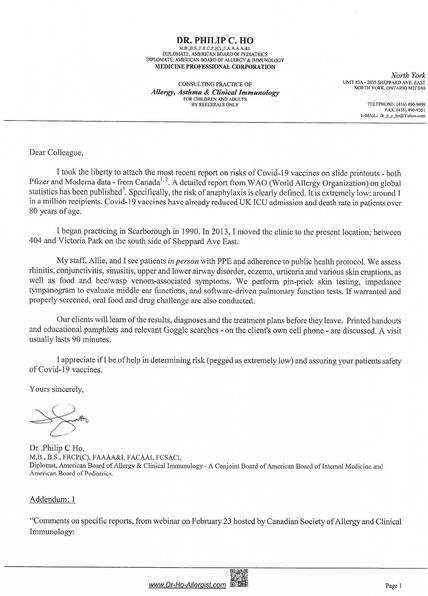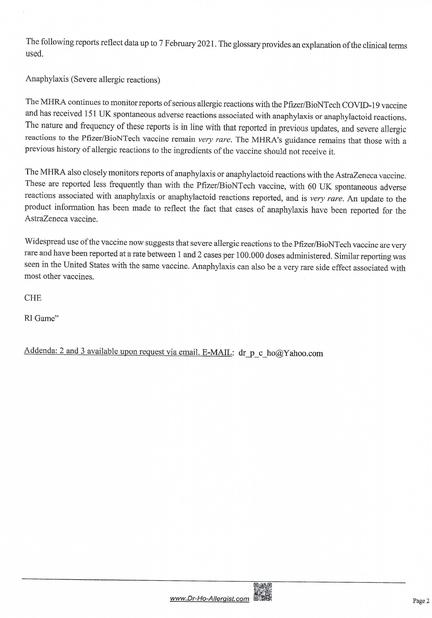Patient Education
"Hives" or urticaria
By Dr Philip Ho
My assessment today indicates that your (or your child's) skin problem is compatible with "hives". It is estimated that up to 80% of the adult population has suffered from "hives" at some time in their life. Of course, most of the cases are mild, brief and self-limiting; often they do not even come to medical attention. Typically, the swellings are pale red and pink, "bumpy", and transitory; they migrate from one part of the body to another. "Hives" are itchy. They occur more commonly towards the end of the day, from sweating or after a hot shower. Dermatographism - which means literally "writing on the skin" - often occurs. Importantly, after the swellings subside, there should not be any left over markings. It is extremely unlikely that speech, swallowing or breathing be affected; similarly, the private parts of the body should be spared.
Allergy is the prime suspect and indeed you are referred to myself - a certified allergist and immunologist. An underlying allergy should be ruled out. However, various studies on large groups of patients who suffer from "hives" showed that approximately 3 out of 4 patients do not have any demonstrable cause. This conclusion is arrived at only after a detailed examination of the circumstances when the "hives" occur, as well as surveying possible triggering factors in your home, work or your hobbies. Furthermore, it is the responsibility of a qualified allergist and immunologist to consider the uncommon but important medical conditions that may first show up as "hives" (and later with other full-blown symptoms), such as thyroid conditions or auto-immune diseases. Depending on the severity and frequency of "hives", blood tests, urine and stool examinations may be requested of you in different stages. Your immune system will be assessed and along with it, the "complement system" which contains a series of blood proteins that participate in various day-to-day immunological functions of your body. There is one rare form of "hives" that actually affects the throat, the airway, and bowel and the genitalia. It runs in the family and can be diagnosed by special "complement tests". (Fortunately, once identified, it can be controlled successfully.)
In approximately 20% of adults but in about 70%-80% of children, particularly infants, "hives" are associated with an infection, be it acute like a sore throat especially "Streptococcus", or chronic like ear or sinus infections. It could be hidden: in the dental cavities, in the urinary tract, or in the gut as parasites.
If an underlying cause is found, removing it will almost guarantee recovery. Even in those patients where a cause cannot be defined (known as "idiopathic" cases), effective treatment - control - is available. To-date, we have 5 different groups of medications to control skin itchiness or swelling. If needed, I will prescribe them to you in stages. Very often, they may be used in combination so as to achieve optimal effect. If all underlying medical conditions are ruled out, "hives" runs its natural course. Most cases subside in months; (less than 5% remains active after 10 years). You are encourage to keep in touch with this office if the pattern or location of your "hives" worsens.
In a highly uncomfortable and socially embarrassing ailment like urticaria, I hope that this fact sheet help you to understand, to accept and to follow the proper treatment plan. HIVES do not need to interfere with your life style.
*******************************************************************************************
Why Do Immigrants Develop Hayfever Symptoms in North America?
The answer lies in understanding the induction of the allergic process and the availability of allergens - substances that provoke allergic reactions - in this North America environment. It is well established that allergic disorders are hereditary. However, there is a wide variation as to when and in what form the genic expression is translated into clinical symptoms. Predisposed individuals may develop symptoms in infancy - primarily in the form of eczema or food allergy - or in the mid and late childhood - in the form of allergic rhinitis ("hayfever"), its complicating diseases, specifically, recurrent ear infections, or asthma.
The exposure to allergens and the characteristics of the allergens are most crucial. In tropical climates, the vegetations - plants and flowers - are ecologically adapted for insect-pollination. These pollens - usually of bright colour and high fragrance - are sticky and rather sizable. In this North American (temperate) climate, the pollens are adapted to dissemination by wind. They are non-sticky and much smaller - of a size that can easily be carried by air current into the human nostrils and further down into the lungs. Furthermore, these pollens are produced in massive quantities to compensate for the low success rate of wind pollination. In Southern Ontario, tree pollination season begins in early April and ends in mid-June; that of grass from early June to late July and that of weeds from mid-August till the first frost.
One of the weeds - ragweed - deserves further description. As unique as the panda being found only in China, ragweed exists only in North America. Its pollen is very potent in inducing the allergic reactions. This process known as sensitization involves complex but well defined immunological steps. Upon the first exposure, the allergic (IgE-mediated) system is "turned on" and with repeated (annual) exposure, the response is amplified. It is therefore a common phenomenon that immigrants, even those who are genetically predisposed, are symptom-free in the first years. Itchy eyes, sneezing and runny nose begin in the second or more commonly, during the third, fourth or the fifth year after settling in the Greater Toronto Area. These symptoms could be mistaken as "colds", "pink eye", "bronchitis" and "pneumonia".
A proper diagnosis is important for a patient to manage his/her disease. Appropriate treatment is available in various formats: oral medications, (prescription) nose sprays and hyposensitization. Hyposensitization involves a series of injections that contain allergens specific to the patient. In the short term, these injections induce blockage - in the form of IgG: a "counter"-antibody to IgE - and in the long run, an immunological suppression - "turning off" - of the allergic process. This "tolerization" is usually achieved within a year and the entire program should not last more than 3 to 5 years.
Allergic Disorders can be treated
For more information
Please visit:
The American Academy of Allergy, Asthma & Immunology; www.aaaai.org
For comprehensive information on allergies and asthma, visit the ACAAI's patient education website. The site provides trusted resources on a variety of topics, including food, eye allergies, hives, and allergy testing.
The American College of Allergy, Asthma & Immunology; www.acaai.org
Component Resolved Diagnostics for food allergies; www.somagen.com
Covid Vaccine Allergy Assessment





